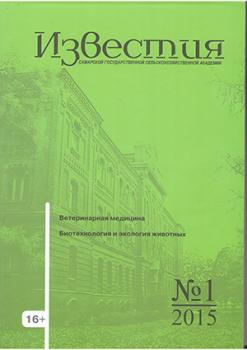Samara, Russian Federation
Samara, Russian Federation
Samara, Russian Federation
The purpose of the study is improving the efficiency of lettuce cultivation by applying electroactivated water (catholyte) for irrigation. Application electroactive water is an ronmentally friendly method of stimulating the growth and development of plants. During laboratory experimental studies on the cultivation of lettuce the influence of different variants of irrigation on the yield of green mass, biochemical-indicators and coefficient of water consumption. In the first embodiment, control is used watering the settled tap water. The second option – watering scheme «water – catholyte», i.e. alternation-mended irrigation water and catholyte, according to the scheme 1:1. The third option – watering scheme «water – catholyte– catholyte» 1:2. The fourth option is only watering with catholyte. The application rate of water to the catholyte is the same. The anolyte in this experiment was used for pre-treatment of soil before sowing. The result is a one-year research found that among the various options elektroaktivisten irrigation water (catholyte) to greater extent influence on productivity. Lettuce have options watering only in the catholyte and alternating watering with plain water and the catholyte is 1:2. The increase in mass of the samples relative to the control (irrigation water) is 17.7% and 36.6%, respectively. Irrigation of the catholyte is et impact not only on productivity but also on the biochemical composition of plants. Reduced with-holding of protein, fiber, sugars and moisture, increasing dry matter content. More economical consumption of irrigation water was carried out in the embodiment of watering plants only in the catholyte. In this case, the consumption of irrigation water amounted to 3.5 g per gram of product. Need to continue research in this direction.
electroactivity, electroactivated, water, catholyte, salad
1. Plutahin, G. А. The use of electro-aqueous solutions in the agricultural sector [Elektronic resource] / G. А. Plutahin, А. G. Koschaev, М. Aider // Multidisciplinary network electronic scientific journal of Kuban SAU. - 2013. - №93. - P. 108-123. - URL: http://ej.kubagro.ru/rules.asp (date accessed: 15.09.2016).
2. Improving the electrical methods and technical means for control and the impact on agricultural objects : report on scientific research work (intermediate) / head Nugmanov S.S. ; performers Grigneva Т. S., Vasiliev S. I., Fathutdinov М. R. - Kinel, 2015. - 49 p. - № SR 01201376403. - Inv. № АААА-Б16-216020470106-1.
3. Grigneva, Т. S. The use of electro-activated water in agriculture / Т. S. Grigneva, S. S. Nugmanov // Problems and achievements of modern science : mat. of II International sci.-pract. conf. - Ufa : EPD RCILT, 2016. - № 1(3). - P. 72-74.
4. Osadchenko, I. М. Effect of electro-activated water at pre-treatment of seeds on growth, development and prodktivnost spring barley / I. М. Osadchenko, I. F. Gorlov, О. V. Harchenko [et al.] // Multidisciplinary network electronic scientific journal of Kuban SAU, 2008. - T. 1, №4 (12). - P. 83-88.
5. Semenenko, S. Y. Electro-technology application solutions in the cultivation of melons / S. Y. Semenenko, V. G. Abezin, О. N. Bespalova // News of Nizhnevolzhsky agrouniversitetskogo complex. Science and Higher Vocational Education. - 2013. - Т. 1, №3 (31). - P. 194-198.
6. Oskin, S. V. Increase of ecological safety of agricultural products // Mechanization and electrification of agriculture. - 2011. - №5. - P. 21-23.
7. Truflyak, Е. V. Study hydroseeding vegetables using electro-activated water [Elektronic resource] / Е. V. Truflyak, N. Y. Kurchenko, D. С. Yarkin // Multidisciplinary network electronic scientific journal of Kuban SAU, 2014. - № 96. - P. 66-79. -URL: http://ej.kubagro.ru/rules.asp (date accessed: 17.09.2016).





